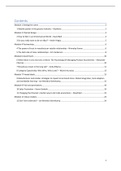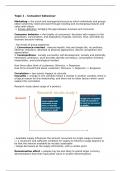Summary
Summary papers Marketing Channel Management 2021
- Course
- Institution
A clear summary of ALL the papers for the course Marketing Channel Management for the MSc Marketing Management/Analytics. I have tried to making everything as structured as possible in the form of bullet lists, so you will have a clear overview of the ideas of the writers. It's 24 pages in total, s...
[Show more]




